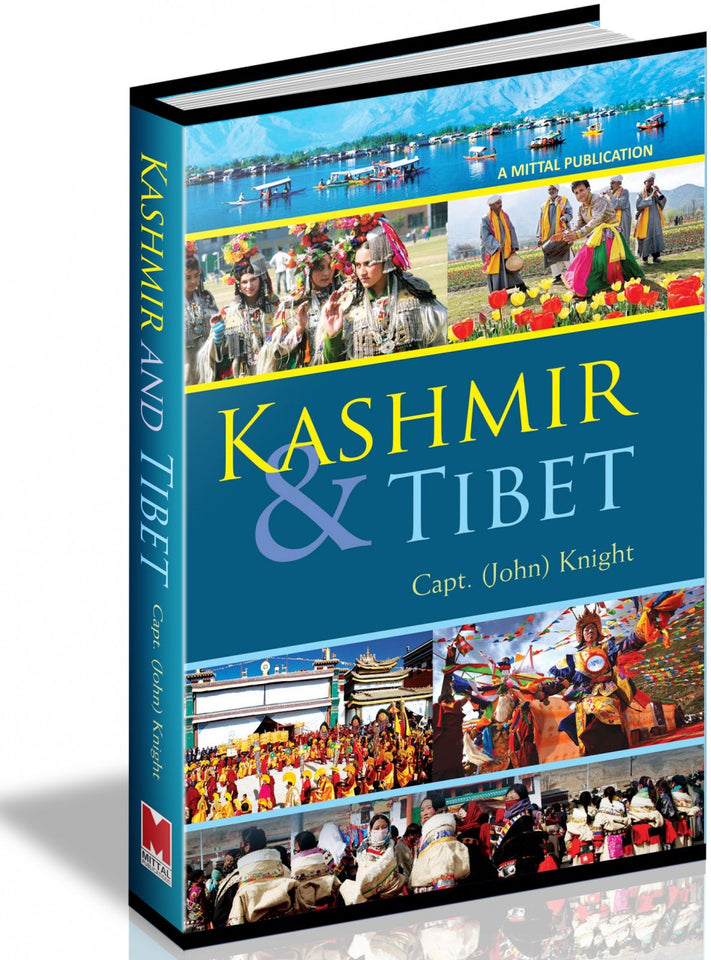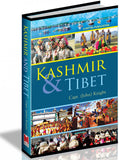Kashmir And Tibet
Regular price
Rs. 950.00
Our planet-Earth-continues to be a veritable paradise for those who are in search of new adventures and who are fired with an insatiable wander0lust for discovering them. During the last century a large number of European travellers and adventure-seekers vied with each other and made most perilous journeys to such inaccessible regions as Kashmir, Laddakh, and Tibet which were devoid of means of any communication with bleak and barren mountain ranges all around. These travellers have left behind most interesting stories of their dangerous journeys. The present volume contains an exciting account of this genre. Its author and his companions the two British officers of the then Indian Army, struck by wander-lust took six months? leave in 1860 just three years after the sensational Sepoy Mutiny of 1857, and undertook an expedition to Kashmir, Ladakh and adjoining Tibet. The author?s other sole companion who travelled throughout the journey, was his Hindu bearer, Rajoo who acted to the expedition with the title and role of qua rter master general (O.M.G.). During those days the means of communication were most difficult. The railways had yet to start and the air journey has not yet been dreamt of. Leaving Kanpur on 21st May 1860 and travelling by bullock cart, they reached Delhi on the 25th May after braving the heat, dust and other inconvenience of the road. Then further braving the gruelling heat and swarms of files at various intermediary stations, they managed to reach Simla on 29 May 1960. In Simla they plan their expedition to Kashmir and then on to Laddakh. After making another journey through the hot and dusty plains of Punjab, including Lahore, they reached the territory of the Maharaja of Kashmir an 13th June 1860 at a place known as ?Bimber?. The author was not very sure about the correct pronunciation of various towns, cities and other places in India. That explains his mispronouncement of Ambala as ?Umballa?, Kasauli as ?Kassowlie?, Gilgit as ?Girgit?, Tibet as ?Thibet? Aligarh and ?Allyghur? and so on and on. In Kashmir, the author had a vast and varied experience of the scenic grandeur, the geographical features, the beauty of its snow-cald mountains, shining nevers and smiling lakes. He has given detailed description of the social, political and the administrative apparatus of the Maharaja?s Government. On entering the capital of Kashmir on 1st July, the author describes the lure of the city in these words: Our path was occasionally studded with the most superb sycamores and lime trees, and as we approached the town we entered a long avenue of poplars, planted as closely together as possible completely hiding all the buildings until close upon them?. After enjoying the hospitality of the Maharaja and witnessing a dance of natch girls in his Durba and after enjoying the trips to several historical sites and monuments, he left for Ladakh on 27th July accompanied by a large number of porters and attendants of course under the supervision of ?QMG? Rajoo. It is the adventures during the journey, to Laddakh and the reminiscences of their stay in Ladakh which from the core of the volume and which makes it one of most existing accounts of adventure and travel. There is superb description of the Buddhist Monastery of Hemis, the abode of Lamas in Laddakh, which adds to the beauty of the book. Finally they (the author and his friend) leave Laddakh on 21th August and undertake the return journey by the same old but meeting new and novel adventures. After spending 50 days in Kashmir and Laddakh they return to British territory and reach their duty station of Kanpur on 31st October 60 on the expiry of 6 months leave. Added at the end is a supplementary chapter which deals with the religions of Cashmere and Thibet (tibet) viz Hinduism, Buddhism and Islam as they were then practised by respective followers of these faiths and as witnessed by the author from close quarters. Then at the end are three Appendices describing the Temples of Cashmere, the Mystic sentence of Thibet (written in French) and a sketch of the History of Cashmere. From all accounts the present volume is a unique and indespensable eye-witness account of the fabulous lands of Kashmir, Laddakh and Tibet of more than 100 years ago. It comes from the prolific pen of a writer who travelled in these in hospitable regions and difficult mountaneous country when travelling was nothing short of an adventure full of perils. A book of this genre must be the coveted possession of all libraries in India and abroad and of all lovers of travel and adventure.
Guaranteed Safe Checkout





